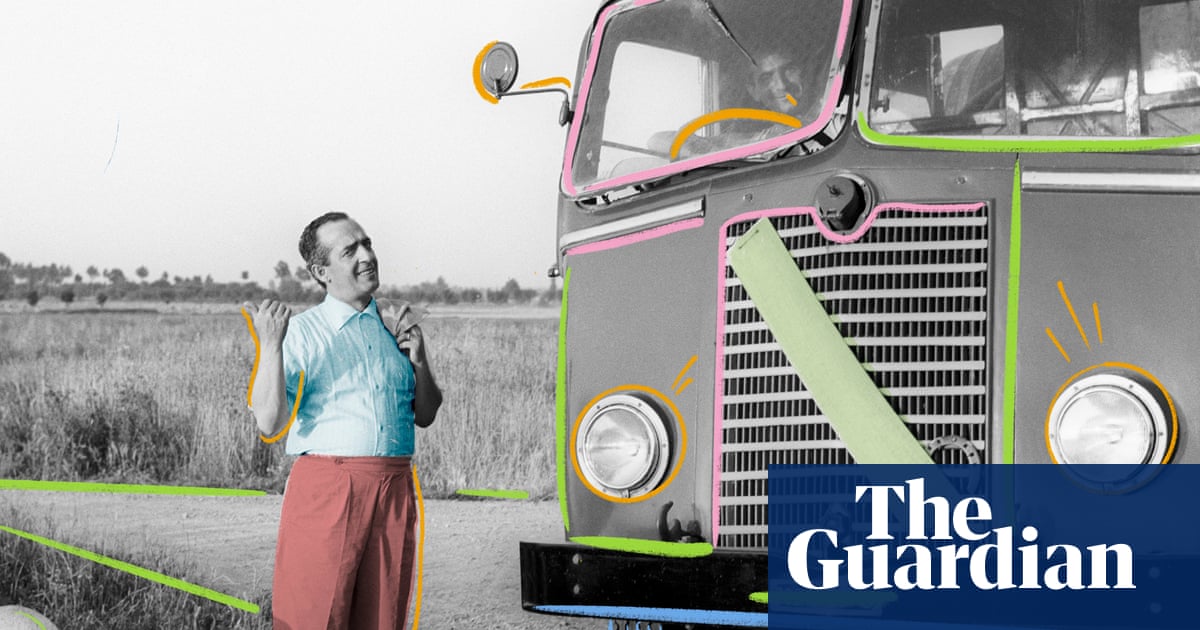It was 1985. No one had ever heard ofIvan Milator the horrors of Belanglo state forest, so hitchhiking was still a thing. I lived in Adelaide and wanted to go to my brother-in-law’s 40th birthday party in Canberra. Young, foolhardy and totally broke, I decided to hitch the 1,300km there.
I packed a bag and set out around the corner from my house. I’d been on my feet for all of three minutes when a beautifully restored American hot rod pulled up in front of me. Behind the wheel was a friend I hadn’t seen since primary school. He invited me to get in, then gave me a lift all the way up to the outskirts of the city, where the major highway to Sydney begins. It was my first of many lucky breaks on this trip.
I got a few rides from there fairly quickly. About a third of the way, as it was getting dark, a young married couple with a child in the back of the car picked me up. They asked where I was going to stay that night and I told them I didn’t know. They said: “Look, we can only take you up the road. But we live about 40km off the highway. Want to come to our place and we’ll put you up for the night?” I accepted and they took me home, fed me and gave me a comfortable bed. The next morning, they gave me a light breakfast and drove me back to the highway, to put me on my way.
I was then on to day two of the journey. Next, I got picked up by an elderly gentleman in a brand-new Mercedes Benz. He took me again about probably 100km out of his way to get me further up the highway towards Canberra – another extraordinary gesture. And that process was repeated until I reached Canberra.
After two days in Canberra, I got back on the road, catching a couple of good rides that got me all the way to western New South Wales.
There, I found myself stuck. I tucked myself up and went to sleep outside a church and when I woke up, I saw a convoy of strange-looking trucks approaching.
I had to rub my eyes because I couldn’t believe what I was seeing: a giraffe, and then an elephant, and then lions. It was a slow-moving convoy and as I focused my eyes, I saw that the trucks were emblazoned with AshtonCircus.
The lead truck slowed down to about 20km/h – slow enough for me to throw my bag up and jump in. Sitting next to me was a muscular Spaniard with a Salvador Dali moustache who called himself Pepe. He told me the circus was pulling up from a regional town down the road and heading towards the South Australian Riverland, which was close to home for me. We rumbled down the road for about six hours, an 18-foot giraffe behind me, while Pepe the trapeze artist told me his entire life story. You couldn’t make it up!
I made it back home in two and a half days, safe and sound, all because of the kindness of strangers – not just one stranger, but many of them. Everybody who picked me up took me further than they should have or needed to, and several of them went way out of the bounds of polite obligation to help me stay safe.
Giving someone a ride is an instant decision – if you see someone on the side of the road, you don’t have time to mull it over. The knee-jerk response of everyone who picked me up was kindness. It makes me think that good heartedness abounds, and that people do take the opportunity to help others when it’s presented to them. That’s why I like to keep telling this story.
Your contact details are helpful so we can contact you for more information. They will only be seen by the Guardian.
Your contact details are helpful so we can contact you for more information. They will only be seen by the Guardian.
If you’re having trouble using the form clickhere.Read terms of servicehereand privacy policyhere
